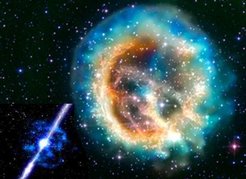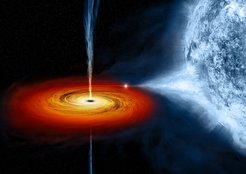Research Interest - Neutron Stars
Pulsars

Pulsars are neutron stars with strong, anisotropic electromagnetic emission. For distant observers, this emission is modulated by the rotation of the object. The discovery of radio pulsars, in 1967, earned Anthony Hewish the Nobel Prize in Physics in 1974. Since then they have become a fascinating area of research.
Birth Properties

Neutron stars are born in violent, supernova Type II explosions, marking the end of massive (>8 solar-mass) main-sequence stars and the birth of ~1.4-solar-mass compact stars. The birth of neutron stars is a rarely observable phenomenon, occurring, on average, once every one hundred years in the Milky Way. Hence, there is little observational information that would allow us to directly measure the properties of neutron stars at birth. However, neutron stars that are observable as pulsars for much of their lifetime possess several kinematic properties that bear the marks of their violent birth. These properties are being used to infer the physics of neutron-star evolution. [more]
Compact Binary Evolution

The evolution of binary stars plays a central role in many areas of modern astrophysics from the progenitors of supernova explosions to understanding gravitational wave sources, such as colliding neutron stars/black holes, and gamma-ray bursts (the most violent and energetic events in the known Universe). [more]
Population

In recent years it has become clear that the previously known population of radio-emitting neutron stars had been incomplete as new manifestations of neutron stars were discovered. In addition to the new class of “Intermittent Pulsars”, the discovery of Rotating Radio Transients (RRATs) revealed the existence of a population of neutron stars that may outnumber the Galactic population of radio pulsars by a factor of a few. Moreover, the discovery of transient radio emission in magnetar sources suggests that other, “previously radio-quiet” source populations may manifest themselves as radio sources at certain times and conditions. Finally, the launch of the Fermi telescope has revealed a whole new population of gamma-ray emitting pulsars that are not detectable at radio waves. All of this is leading to a better, less biased understanding of the Galactic neutron star population.



